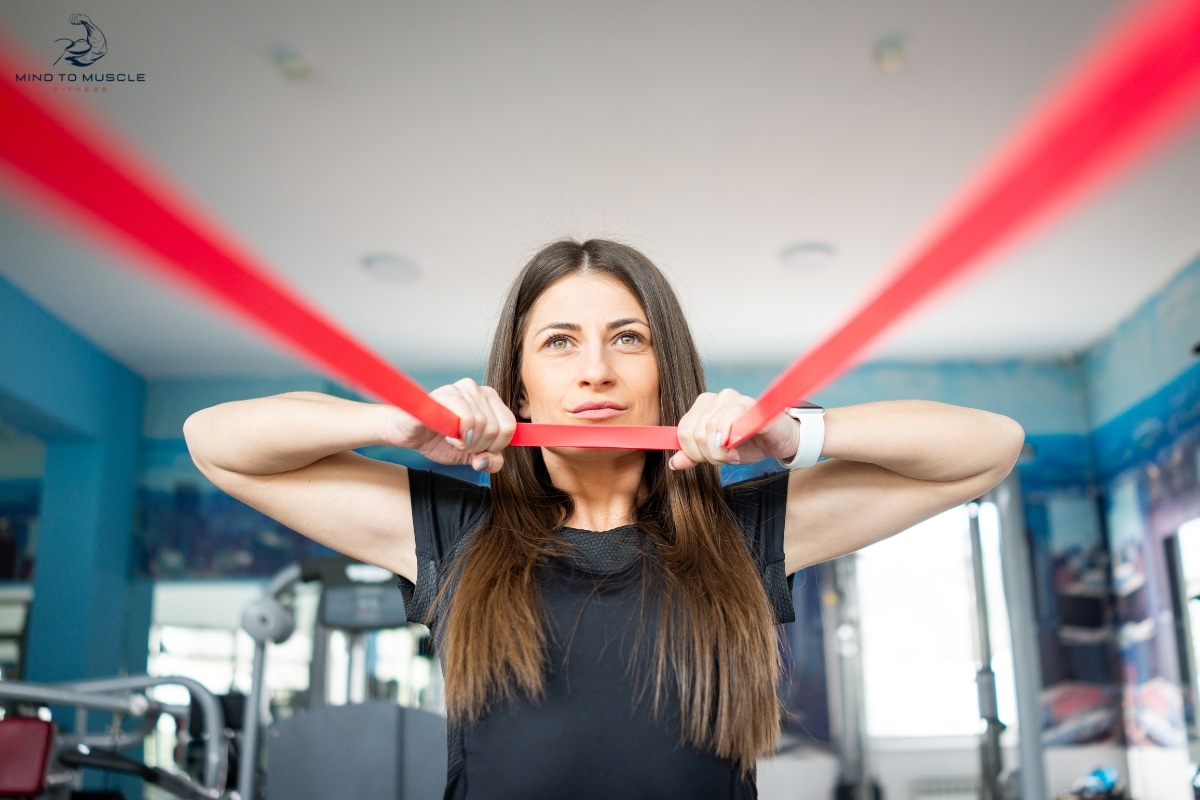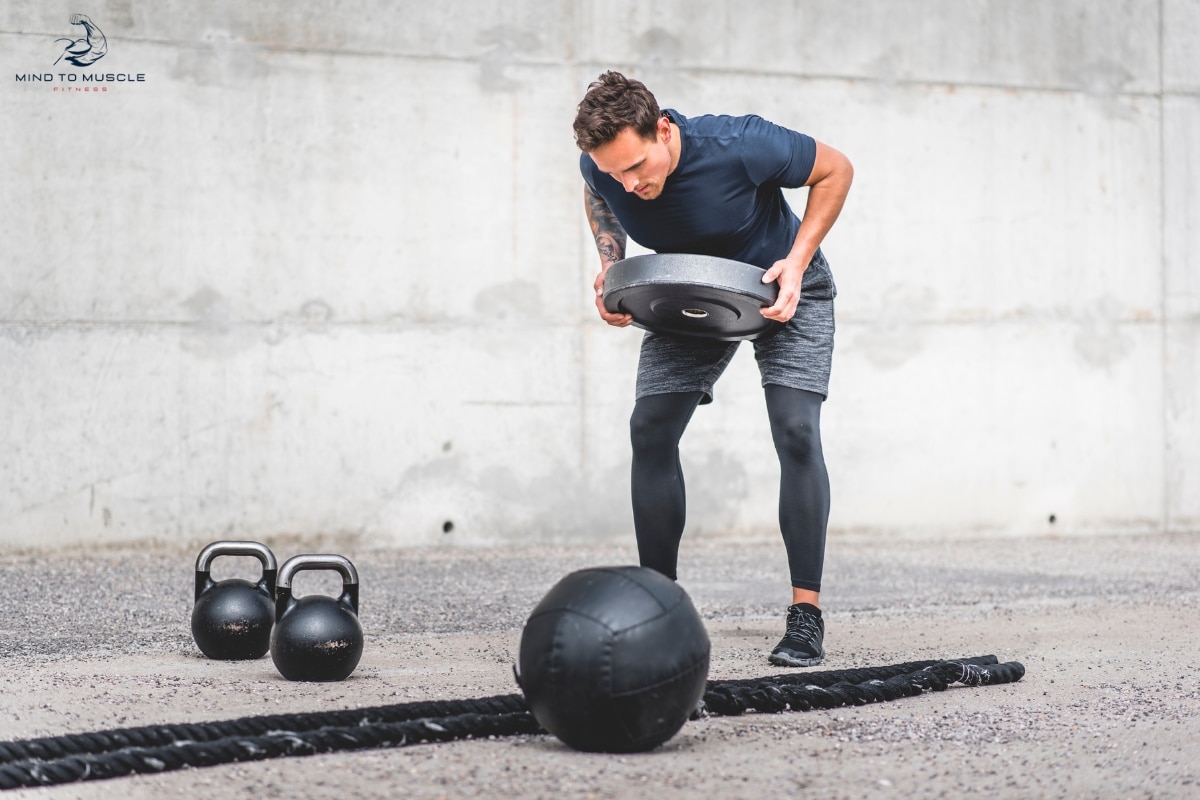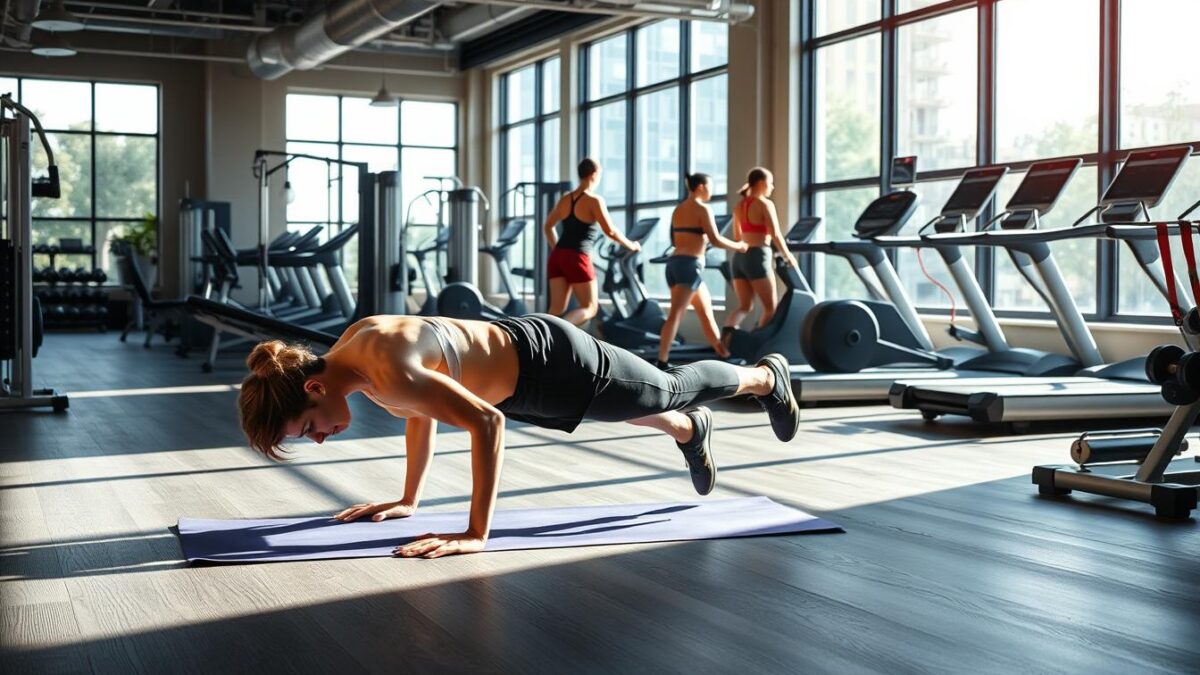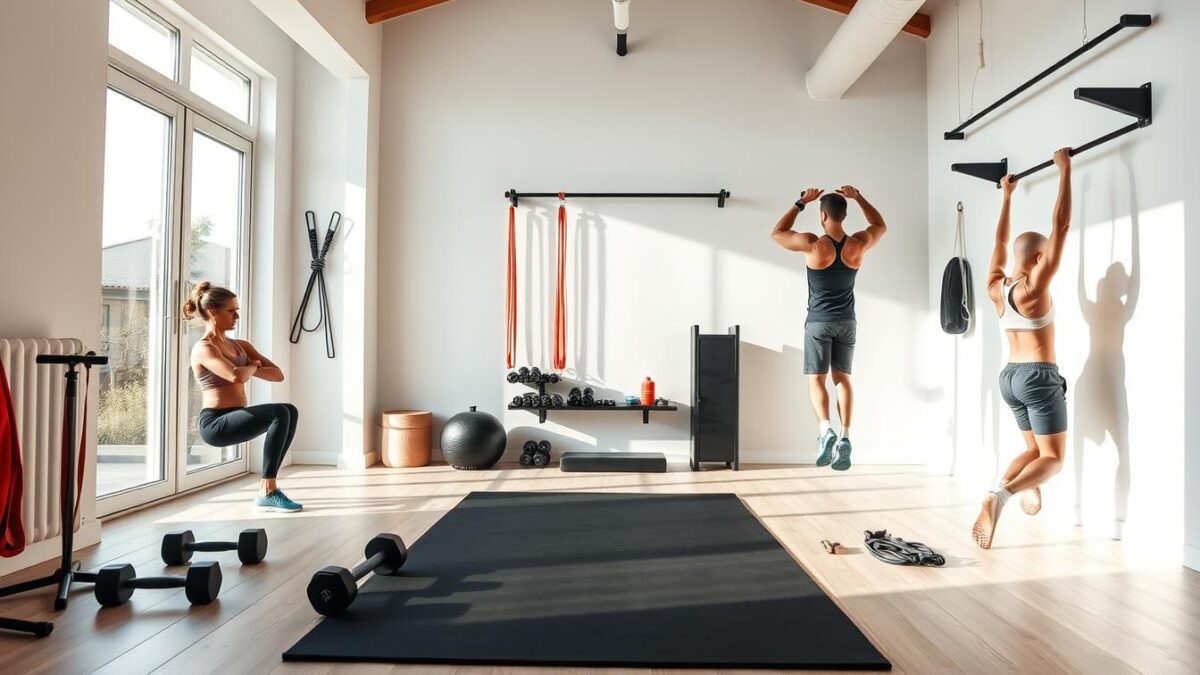
Effective Rhomboid Muscle Workout: Strengthen Your Back
Did you know that nearly 80% of Americans experience back pain at some point in their lives? Strengthening your upper back muscles, particularly the rhomboids, can make a big difference. Small muscles located between your shoulder blades, the rhomboids play a crucial role in upper back strength and shoulder blade support. Whether you’re sitting at a desk or lifting weights, these muscles support posture and movement.
In this guide, I’ll show you effective back exercises specifically targeting the rhomboid muscles. By incorporating these exercises, you’ll not only improve your posture but also enhance overall stability and reduce back pain. Let’s dive in and start fortifying that back!
Understanding the Rhomboid Muscle
Before diving into workouts, let’s first get to know the rhomboid muscle. Understanding where it’s located and its function will help in correctly targeting these muscles.
What is the Rhomboid Muscle?
The rhomboid muscle group comprises the rhomboid major and rhomboid minor. These muscles are critical elements of muscle anatomy that connect the spine to the scapula. They are located in the upper back, beneath the trapezius.
By understanding the detailed muscle anatomy of the rhomboids, you can better appreciate their role in overall back health. Their primary function involves retracting the scapula, which means pulling the shoulder blades toward the spine.
Importance of the Rhomboid Muscle
The rhomboid muscles play a vital role in upper back muscles and scapula support. They ensure scapular stability and help maintain proper shoulder alignment. This stability is crucial for various movements and exercises, preventing injuries and improving posture.
Strong rhomboids contribute to the smooth functioning of the upper back muscles. They are essential for scapula support, which is key in many upper-body exercises. Building a solid foundation with these muscles will enhance your workout efficiency and overall physical health. Strengthening the rhomboids not only improves posture but also helps prevent injuries by stabilizing the shoulder blades during motion. Incorporating targeted movements alongside top lat exercises for growth ensures balanced muscle development and increased strength. By focusing on these key areas, you’ll create a well-rounded upper-body routine that maximizes both performance and longevity.
Benefits of Strengthening Your Rhomboid Muscles
Strengthening your rhomboid muscles provides numerous advantages. In this section, I’ll delve into how targeted exercises can yield a range of physical improvements, including improved posture, enhanced back stability, and reduced pain.

Improved Posture
Developing strong rhomboid muscles plays a key role in posture correction. When these muscles are strong, they help maintain the alignment of your spine and shoulders. This not only gives you a more confident stance but also reduces the strain on other parts of your body.
Enhanced Back Stability
One of the significant strong back benefits is the increase in overall back stability. A robust rhomboid muscle group supports the spine and helps in distributing the physical workload evenly. This stability decreases the risk of injuries and ensures your back can handle various physical activities.
Pain Reduction
Strengthening your rhomboid muscles can effectively alleviate back pain. A well-conditioned set of rhomboids can reduce the likelihood of muscle strains and discomfort. When these muscles are strong, they provide better support and can mitigate pain over time.
Essential Warm-Up for Rhomboid Workouts
Getting ready for an intense workout session? A proper warm-up is key not only for achieving the best results but also for injury prevention. By preparing muscles for exercise, we ensure they are adequately primed to handle the stress of the workout. Here are some essential warm-up routines targeted at the rhomboid muscles.
Dynamic Stretches
Dynamic stretches play a crucial role in activating the shoulder blades and surrounding muscles. These movements enhance blood flow and prepare the muscles for exercise. Arm circles, arm swings, and T-spine rotations are highly effective. Incorporate these stretches into your warm-up routines to ensure your rhomboid muscles are ready for action.
Foam Rolling
Foam rolling helps in breaking up muscle knots and tight areas, thus preparing muscles for exercise. Rolling out the thoracic spine and upper back can significantly improve muscle elasticity. This practice ensures that muscles are more pliable and less prone to strains during the workout. It’s an excellent method for promoting injury prevention.
Activation Exercises
Activation exercises are fundamental for waking up the rhomboid muscles. These exercises involve low-resistance muscle contractions, which activate the muscles without overly stressing them. Scapular squeezes and band pull-aparts are popular choices among fitness enthusiasts. Properly activated muscles enhance workout efficiency and provide a solid foundation for heavier lifts, ensuring effective injury prevention.
Rhomboid Muscle Workout
Engaging the rhomboid muscles effectively requires specific exercises that target these crucial back muscles. By incorporating face pulls, bent-over rows, inverted rows, and prone Y raises into your routine, you can ensure balanced back strengthening workouts.
Face Pulls
Face pulls are an excellent starter for rhomboid exercises. Secure a resistance band or cable at eye level, grab the ends with an overhand grip, and pull towards your face. Ensure shoulder blade retraction during the motion, squeezing your rhomboids at the peak.

Bent-Over Rows
Bent-over rows help in overall back strengthening workouts by targeting the rhomboids and other back muscles. Stand with your feet shoulder-width apart, bend at your hips keeping your back straight, and pull the weights towards your torso. Remember to maintain shoulder blade retraction throughout this movement.

Inverted Rows
Utilizing your body weight, inverted rows are fantastic for rhomboid exercises. Position yourself under a bar, grab it with an overhand grip, and pull your chest towards the bar. Keep a straight line from head to heels, focusing on activating the rhomboids with each pull.
Prone Y Raises
Prone Y raises effectively isolate the rhomboid muscles. Lie face down on an incline bench, holding light weights. Lift your arms to form a “Y” shape, keeping your thumbs pointing upward. This movement aids shoulder blade retraction, making it a staple in rhomboid-targeting workouts.
| Exercise | Equipment | Target Muscles |
|---|---|---|
| Face Pulls | Resistance Band/Cable | Rhomboids, Rear Deltoids |
| Bent-Over Rows | Free Weights | Rhomboids, Lats |
| Inverted Rows | Pull-up Bar | Rhomboids, Middle Back |
| Prone Y Raises | Light Dumbbells | Rhomboids, Lower Trapezius |
Common Mistakes and How to Avoid Them
When it comes to rhomboid muscle workouts, several common mistakes can hinder your progress and even lead to injuries. Let’s explore these pitfalls and how to avoid them, ensuring you adopt a proper lifting technique and maintain exercise safety.
Using Heavy Weights
Lifting weights that are too heavy is a frequent workout mistake. It might seem like pushing your limits is effective, but using too much weight can compromise your form and increase the risk of injury. Instead, start with manageable weights and gradually increase as your strength improves.
Incorrect Form
Another critical mistake is not maintaining proper form during exercises. Incorrect alignment and posture can strain your muscles and joints. Focusing on a proper lifting technique is crucial for both effectiveness and exercise safety. Always engage your core and ensure your movements are controlled.
Overtraining
Overtraining is a common issue, leading to muscle fatigue and burnout. While it’s important to challenge yourself, your muscles need time to recover and grow. Balance your workout routine to include rest days, allowing your rhomboids to repair and strengthen without the risk of overexertion.
| Common Mistake | How to Avoid |
|---|---|
| Using Heavy Weights | Begin with lighter weights and gradually increase as you gain strength. |
| Incorrect Form | Ensure proper alignment and posture during workouts. Engage your core. |
| Overtraining | Incorporate rest days into your routine to allow muscle recovery. |
Cool Down and Stretching Techniques
After an intense back workout, it’s crucial to incorporate cool down exercises to help with back muscle recovery and maintain flexibility. Let’s delve into the best methods to unwind post-exercise.
Static Stretches
Static stretches are ideal for deepening the stretch and increasing flexibility. Hold each stretch for about 30 seconds. Focus on your back muscles to aid in their recovery. Examples include the child’s pose and seated forward fold.
Yoga Poses
Yoga can be incredibly beneficial for both mind and body. Poses such as the downward dog and cat-cow stretch promote stretching for flexibility and muscle relaxation. These poses help to elongate and relax back muscles after a workout.
Breathing Exercises
Breathing exercises help to cool down by reducing the heart rate and promoting relaxation. Practice deep breathing techniques, such as diaphragmatic breathing, to aid in cooling down and enhancing overall calmness.
Creating a Balanced Workout Routine
Maintaining a well-rounded workout plan is crucial for overall health and fitness. Integrating rhomboid exercises into your routine is essential, but it’s just one piece of the puzzle. It’s important to work multiple muscle groups, ensuring a comprehensive fitness approach that includes both strength training and cardiovascular exercises.
To achieve a balanced exercise plan, I recommend dedicating specific days to different body parts. For instance, pair your rhomboid muscle workouts with upper back and shoulder exercises. On alternate days, focus on your lower body and core. This division helps prevent overtraining and promotes better muscle recovery.
Rest and nutrition are just as important as the exercises themselves. Ensure you give your muscles adequate rest between intense workouts. Incorporate high-protein foods to support muscle repair and growth. A balanced workout plan coupled with proper nutrition makes for sustainable physical development.
Tailoring your fitness routine to fit personal needs is key. Everyone’s body responds differently to various types of workouts. Experiment with different exercises and recovery techniques to find what works best for you. By maintaining exercise balance and remaining consistent, you’ll be able to see long-term results and achieve your fitness goals.



